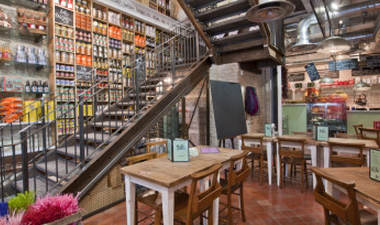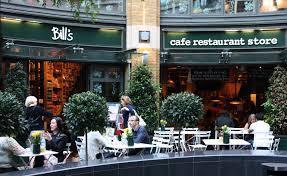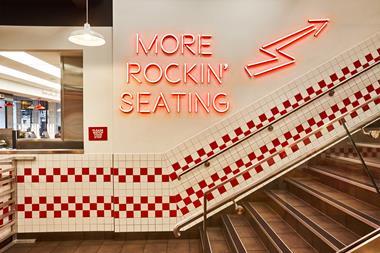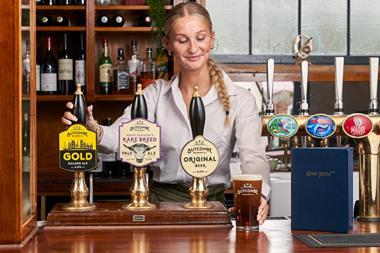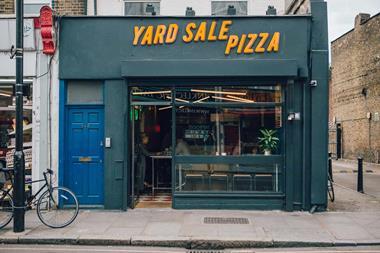The pub market is expected to reach a value of £24.3bn by 2018. This growth will be driven mainly by managed & branded pubs, but the challenge for this sector is to manage expectations as consumers increasingly measure operators against their restaurant peer group. At the same time, as M&A activity builds momentum, the spotlight falls on Bill’s and the timing of when this all-day dining success story starts to assess its options.
The pub market segment is set to experience turnover growth of 2.0% this year, ahead of the 0.9% forecast for the casual restaurant sector, according to M&C Allegra Foodservice’s UK Pub Market Report 2015. This is on the back of improving same store performance, as net outlet contraction will amount to -1.9% in the 12 months to December 2015. Managed & branded pub outlets account for 18% of the pub market but make up 44% of total sales, this will grow to 20.9% over the next three years and cement its position as the growth engine of the industry. In line with growing consumer expectations.
According to M&C Allegra Foodservice’s latest Eating Out Panel data, consumers rate pubs higher for 12 out of 14 Key Performance Indicators during breakfast, and 10 out of 14 during lunch. Pubs are rated highly for the value for money they offer, as well as service speed and quality. Restaurants maintain a lead on most metrics during dinner, where food quality is under extra scrutiny.
Restaurants nudge ahead on perceived freshness and food quality/taste (but only slightly: 8.26 compared with 8.17). In terms of the overall experience, pubs score 8.40 compared with 8.31 for restaurants.
In response to growing demand for all-day dining, some pub groups have already started to shift their pub formats towards a café-pub-restaurant hybrid. Stonegate launched a new all-day student concept, Common Room, last year, while Marston’s rolled out two new all-day dining concepts, Ebb & Flow and Generous George. At the same time, Wetherspoon’s growth has been driven by successful adaptation to all-day dining, from a competitive breakfast offer to Lavazza coffee and an attractive drink proposition. More will surely follow, whether through evolution or such as Greene King through acquisition.
We envisage pubs will continue to strengthen their place in society by focusing on one of four business models or, alternatively, combining elements of the four through hybridisation. All-day pubs will offer a third space in the community where customers can go in for a coffee, a drink or food throughout the day. Locally relevant wet-led local pubs will keep their drinks selection up-to-date and offer consumers a venue for casual socialising. High Street after work pubs will target professionals in city centre locations, offering drinks for both male and female customers along with snacks and food. Food destination pubs will cater to entire families looking for high quality food in a comfortable environment.
All of the above points and more will be discussed at our annual managed pub retail summit in London tomorrow (to see the full agenda go to http://managedpubsummit.co.uk/ - a handful of tickets for the day remain available). Managed operators have been able to reclaim market share form the restaurant sector by reinventing their own models and reclaiming the third space. From cocktail bars to wet-led community pubs, and from late-night venues to food-led concepts, all have taken different routes to adapt and evolve to meet the needs of the modern consumer, some arguably with varying degrees of success.
A positive trading period is forecast for pubs over the next three years. The total pub market is set to enjoy annual average growth of 3.6% over 2015-2018, with the managed and branded category set to grow by an impressive 6.6%. Managed pubs will account for 83% of the £2.42bn value growth in the pub market.
All pub segments will benefit from strengthening household budgets and further food & beverage quality and choice improvements. However, changes to the Beer Tie, are expected to enhance the position of managed & branded pubs, while reducing the attractiveness of investing in tenanted & leasehold pubs. The next challenge for managed sector is to build on that momentum and continue to match consumer expectation.
Waiting for Bill’s
Talk to most M&A experts and the majority would have positioned a sale process for Bill’s, the Richard Caring-led, fast-growing, all-day dining brand, at the start of this year. If not the start then certainly some time during 2015. However, as we reach the halfway mark of the year and despite a number of restaurant groups assessing their funding options, it remains business as usual at Bill’s.
The sense you get from the business itself is there is no rush and why should there be. The group is on track to post full-year turnover of close to £90m in its current financial year and has a current run rate EBITDA of over £14m. The c65-strong business plans to open a further 20-plus sites over the next 12 months and believes there is scope for over 250 openings in the UK for the brand.
Time is on its side especially at a time when the M&A field in the sector is becoming crowded. At present I understand there is up to 10 processes currently underway or about to be launched later this summer, including those that have been well flagged up Ed’s Easy Diner, YO! Sushi, Las Iguanas and La Tasca. As I have stated before, there is a difference here of needing to be on the market and wanting to be and it will be interesting to see if speculation regarding Bill’s former sister brand Cote coming back to the market firms up and if so what impact it has on some of the other processes if they are still in play.
Cote is understood to be ahead of schedule in terms of performance and expansion, which is a credit to managing directors Alex Scrimgeour and Harald Samuelsson, but also to the foundationa put in place by Andy Bassadone and Chris Benians. There is a sense that the latter pair regret exiting Cote as early as they did and that they won’t repeat this with Bill’s. With the speed at which Bill’s is expanding they will also be keen, as will future suitors, to see how the performance of new sites stabilise.
As experience shows us, Bassadone and Benians also like to have another project in the pipeline (Strada/Cote/Bill’s) and while they have launched three new formats over the last two years – Grillshack, Limeyard and Jackson & Rye – none, as yet, have the foundations in place to become the next expansion success story, although the latter format may prove me wrong over time.
But when I say three formats, shouldn’t that be four. Anyone who has been to Ivy Market Grill in Covent Garden or Ivy Chelsea Garden, could not fail to 1. be impressed by the concept and 2. notice the influence of Bassadone and Benians. A fresh take on “affordable glamour”, my colleague Simon Stenning has voiced the opinion that the format is what Brown’s should have evolved in to. I understand that the company is ready to quickly expand with a site in Kensington under consideration, alongside locations in the Home Counties, while further sites in Guildford and Bath are already being targeted for openings over the next two years. So enough to keep everyone busy, sales process or not.


























